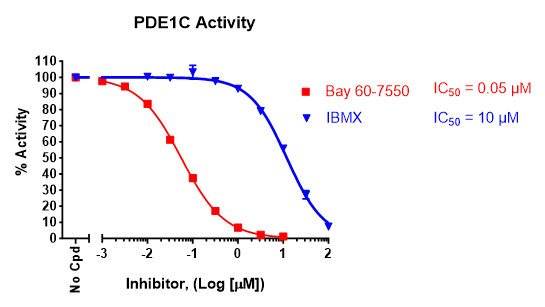PDE1C, GST-Tag Recombinant
Human recombinant full length PDE1C (phosphodiesterase 1C), containing amino acids 2-634(end). This construct contains an N-terminal GST-tag. The recombinant protein was affinity purified.
This product has been cited 2 times.
≥90%
≥15,000 pmol/min/µg
Phosphodiesterases (PDEs) play an important role in the dynamic regulation of the second messengers cAMP (cyclic adenosine monophosphate) and cGMP (cyclic guanosine monophosphate) signaling, by hydrolyzing them. The PDE superfamily is composed of 11 families, with PDE4, 7 and 8 being cAMP-specific hydrolases, and thus regulating positive and negative responses to it. PDE1 is encoded by 3 genes, PDE1A-C, and has multiple splice variants. Human PDE1C can be found in several tissues, including the brain, heart, smooth muscle cells (SMCs), cardiomyocytes and pancreas. PDE1C is involved in multiple biological functions, in a cell-specific context. It is involved in SMC proliferation and collagen deposition, being highly expressed in the myocardium. It can form a complex with A2 Receptor and TRPC3 (transient receptor potential channel 3), serving as an antagonist for A2 Receptor related pathways, and leading to apoptosis. Inhibition of PDE1C can thus be a strategy to fight vascular aging and doxorubicin-induced cardiotoxicity. It also participates in stress related release of CRF (corticotrophin-releasing factor) and arginine vasopressin and aged related cAMP reduction in the hippocampus. Its various functions make it a highly relevant target for the treatment of many disorders, and the use of PDE1C inhibitors will continue to open new therapeutic avenues.
1. Vandeput, F., et al. (2007). J. Biol. Chem. Nov 9;282(45):32749-57.
2. Cygnar, K.D., Zhao, H. (2009). Nat. Neurosci. Apr;12(4):454-62.
3. Ortiz-Capisano, M.C., et al. (2009). Am. J. Physiol. Regul. Integr. Comp. Physiol. Nov;297(5):R1469-76.




